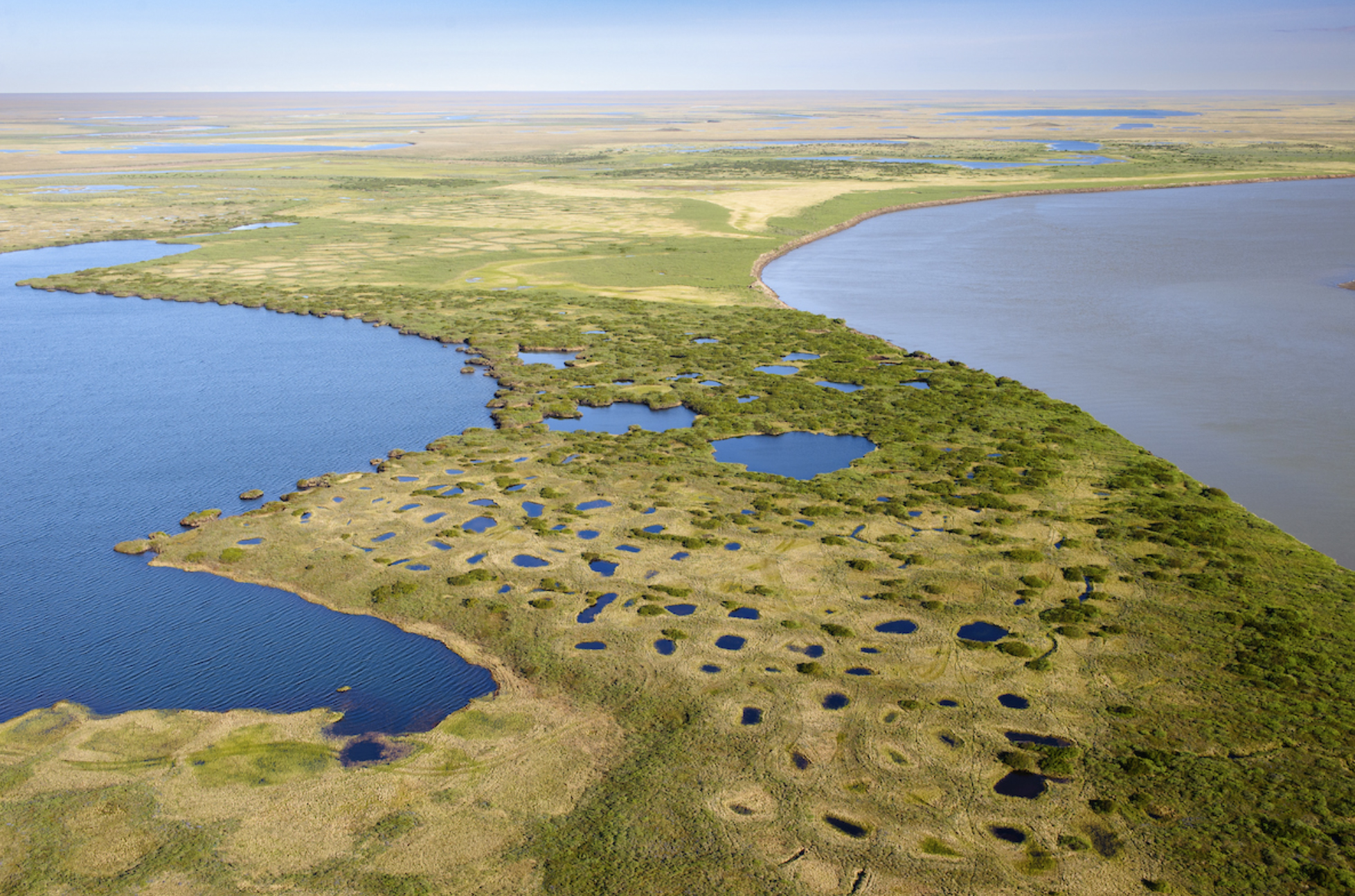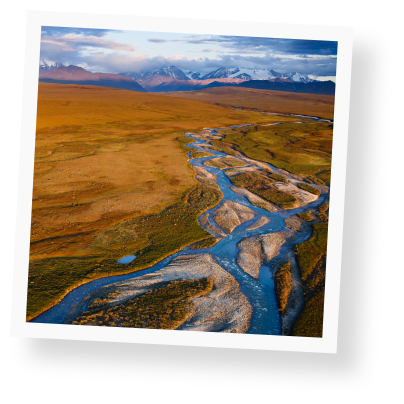Explore The Teshekpuk Wetlands in this 18 mini-doc from cornell laboratory of ornithology
This blog is an essay about the magnificent Teshekpuk Lake Special Area in the Western Arctic of Alaska. Written by Jeff Fair, it is excerpted from On Arctic Ground: Tracking Time Through Alaska's Petroleum Reserve published by Braided River. The video featured was produced by the Cornell Lab of Ornithology
By Jeff Fair
One of the world’s most powerful waterfowl magnets, Teshekpuk Lake and its wetland surroundings draw hundreds of thousands of birds every year from across the globe and all the world's oceans into Alaska's western Arctic to nest and molt. Birds from all seven continents have been found in America’s Arctic. Renowned internationally, this complex of lakes offers the most diverse and productive wetland ecosystem in Arctic Alaska. The National Audubon Society has called it “ecologically unique and one of the most critical wildlife habitats in the Arctic."
Teshekpuk Lake, the largest lake north of the Brooks Range, is the most recognizable landmark on a map of the National Petroleum Reserve-Alaska. A body of more than 200,000 acres, it anchors the 1.7 million-acre Teshekpuk Lake Special Area, an expanse a bit larger than Delaware, in the northeastern corner of the Reserve. While the huge lake itself is important to fish and waterfowl populations, it is the habitat around it that is critical for several species of geese, a number of rare and threatened avian species, and an entire caribou herd- and the Inupiaq subsistence hunters who depend on them.
A matrix of lakes to the north and east of Teshekpuk comprises an internationally significant waterfowl molting area, unparalleled throughout the circumpolar Arctic. More than one-fifth (approximately 22,000) of the world's Pacific black brant come here from across Alaska, Canada, and Siberia to molt their feathers each year (during which time they are flightless). In 2001 nearly 37,000 of them, or about one-third of their world population, molted here in the largest congregation ever observed. The large, open lakes here provide a rare combination of flightless escape from predators and excellent forage to fuel both the growth of new feathers and the coming fall migration.
Greater white-fronted geese from across the Arctic coastal plain also molt here by the tens of thousands, along with thousands of Canada geese and snow geese, for a total of about 60,000 to 100,000 geese per year. Aircraft overflights associated with development in the Arctic can stress geese into weight loss that threatens migration success and, therefore, survival. Other disturbances associated with industrial development include human traffic, higher predator populations related to human presence, and loss of nesting habitat.
Spectacled and Steller's eiders (both threatened species under the Endangered Species Act) use the Teshekpuk Lake Special Area, and yellow-billed loons (a candidate for listing as a threatened species) nest here, along with Pacific and red throated loons, tundra swans, northern pintails, long-tailed ducks, and king eiders. Large numbers of shorebirds breed in the Teshekpuk Lake wetlands, including dunlins, long-billed dowitchers, red phalaropes, American golden-plovers, black-bellied plovers, and semipalmated, pectoral, and stilt sandpipers. Buff-breasted sand-pipers, a species that once numbered in the millions but has declined to below 60,000 worldwide, nest here in low numbers.
Caribou herds are identified by their concentrated calving grounds, and the Teshekpuk Caribou Herd cows normally give birth just northeast, east, and southeast of the big lake. In 2010 and again in 2011, however, a large number of them calved southwest of Teshekpuk near the Ikpikpuk and Chipp rivers.
The herd uses critically important insect-relief areas - open, windier areas near water or on highlands where the mosquitoes and botflies are less inclined to attack - along Teshekpuk shorelines and the Beaufort Sea coast. To move among these key habitats, the caribou must pass through two narrow areas of land, one due east of Teshekpuk and one to the northwest. To ensure caribou passage, these corridors must remain free of industrial disturbance and interference, including roads and their traffic, pipelines, and fences.
Many of the lakes and rivers in the Teshekpuk Lake Special Area, including Teshekpuk itself, abound with grayling, arctic char, lake trout, and whitefish—all excellent human fare. These fish, along with the primary subsistence meat of caribou and limited waterfowl hunting, make the Teshekpuk Lake Special Area an important food-collecting area for the Iñupiaq villages of Utqiagvik (formerly known as Barrow), Atgasak, Nuiqsut, and several others, representing several thousand Iñupiat. Much of the caribou herd moves out of the Teshekpuk Lake Special Area to wander across the Reserve during the colder seasons, providing 60 percent or more of the caribou consumed in North Slope villages.
On its coastal fringes by the Arctic Ocean's Beaufort Sea, the Teshekpuk Lake Special Area contains polar bear den sites and maternal denning habitat. Mainland and barrier-island denning sites and travel lanes for this threatened species will become ever more essential as the pack ice dwindles due to climate change.




